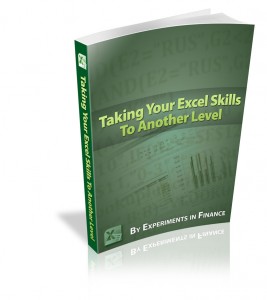Many people own and use a safety deposit box, but you may not be using yours in the best way possible without being completely informed of its limitations and what it’s best used for. Here are some considerations to keep in mind.
1. Safety deposit boxes and their contents are not covered by the FDIC or even under the bank’s insurance, save in the unlikely case of gross negligence. Moreover, they aren’t usually covered by a standard homeowner’s or renter’s insurance, either. This is worth keeping in mind if you’ve got family jewelry or heirlooms stored there.
2. If you have a safety deposit box, make sure your family can get to it if they need to in case of emergency, or should you become incapacitated. Most safety deposit boxes come with a key that has no identifiable information, and there are plenty of stories of people who inherit the key to a safety deposit box from a relative but have no idea of the box number or even at which bank the box is located! A wise thing to do would be to separate and carry your safety deposit keys elsewhere, or even mail a copy to a relative, making sure that they know the name of the bank and the number of the box where it’s located should they need to access it. Once a key is lost, the bank must drill a hole in order to open a box. Contents are usually kept for a certain period of time before they are sent to the state.
3. Having a power of attorney does not allow someone to access your safety deposit box. Rules vary from state to state, but if you plan on allowing someone else access to your safety deposit box, you will most likely have to add their name to the permission list when you open the box.
4. Hopefully this is a remote consideration, but a safety deposit box and its contents can be frozen by the IRS as part of your assets.
5. You’ll also want to have a complete inventory list of what’s in your safety deposit box.
6. Safety deposit boxes are small, which means you can’t (and shouldn’t) keep all your important documents there, so you must pick and choose.
So what should you keep there? Common types of documents include insurance policies, deeds, and titles. These are valuable but recoverable items in the unlikely case that a bank vault gets damaged and contents are irrecoverable. Another item that you might want to keep there is a camcorder video recording of the contents of your home. This has been proven to be the single most important item when working with insurance companies to recover or get reimbursement for stolen or damaged property. Your original will should be kept with your attorney, but a copy of your will can be kept in a safety deposit box. Just make sure your family knows where they can find both.
What not to keep in a safety deposit box: You don’t want to keep anything there that you’d need in case of an emergency (in terms of a disaster or your own incapacitation). This includes passports, funeral instructions or your durable power of attorney papers. Family photos, which are often cited as the single worst thing that people feel they’ve lost in a disaster, shouldn’t be kept there either. In the case of family photos, it’s best to make multiple copies and store them in different places to increase the likelihood that you’ll still have them for a long time.
If you’ve got additional questions about opening a safety deposit box, be sure to talk to your bank; after all, these are your assets that you’re trying to protect. Safety deposit boxes can be a great place to store important items as long as you’re properly informed about their purpose.
***************************************************
Look Good at Work and Become Indispensable Become an Excel Pro and Impress Your Boss

***************************************************

